Asia
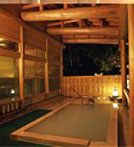
Many ryokans — traditional inns — offer public baths. Photo from Japan National Tourism
Sixth in a series
Taking a public bath in Japan can be a wonderfully relaxing experience — as long as you know the rules.
Our introduction to the baths came at Kyoto’s Funaoka Onsen, located on a nondescript street about a half hour’s walk from our Airbnb.
Here one can slip into a variety of hot and even hotter mineral-water pools, both indoors and out, and remain there until you start to boil. There’s also a sauna in case you need some roasting.
The residual effect is incredibly soothing and the perfect way to unwind after a day spent sightseeing or climbing small mountains.
Funaoka onsen is one of Kyoto’s oldest and finest public baths, though the most picturesque and authentic onsen are in the countryside and fueled by Japan’s multitude of hot springs.
But… Continue reading
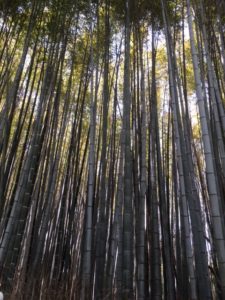
The bamboo grove at Arashiyama
Fifth in a Series
At first, it wouldn’t seem that heading to some of Kyoto’s most popular attractions during cherry-blossom season would qualify as an escape.
But the key to finding the peace and quiet we were seeking amid the throngs, my wife Catharine and I found, was to just keep walking — and climbing — once we got there.
On the same day we visited the Ryoan-ji Zen rock garden and the Kinkaku-ji temple (Golden Pavilion), we boarded an antique narrow-gauge railway that carried us in romantic style to Arashiyama on the western outskirts of Kyoto. (You can also take more modern trains from Kyoto station, or take a bus or the subway.)
It was obvious when we arrived that however they had gotten to Arashiyama, a good portion of everyone visiting Kyoto had conspired to visit at the same time as… Continue reading
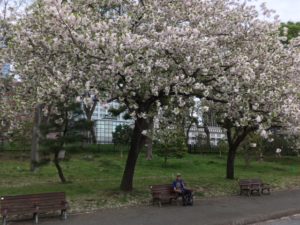
Some cherry trees still held their blossoms.
Fourth in a Series
In most years, we would have landed in Tokyo right at the peak of cherry blossom season.
Alas, my wife, Catharine, and I arrived in the Japanese capital a few days too late in early April this year because the winter there had been unseasonably warm and most of the delicate cherry blossoms had already drifted off the trees in this breezy city.
Nonetheless, some trees remained in full bloom, as did many other types of fruit trees. And as we walked through parks that offer a wonderful respite from Tokyo’s crowded streets, scores of Japanese families were still laying out their traditional picnic blankets and baskets under the cherry trees, blossoms or no. And having a great time of it.
From our little Airbnb-rented apartment in the teeming Shinjuku district, we set out to explore… Continue reading
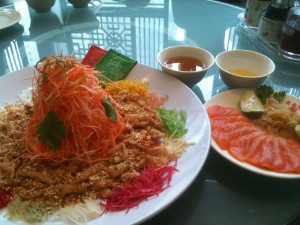
Yu Sheng, the salad that Malaysian Chinese toss to ensure prosperity for the coming year. Photo by Jade Chan.
Chinese New Year (also known as Spring Festival), starts on February 16 this year and continues for 15 days.
It’s the most important festival time of the year in China — when millions of Chinese travel to their home villages and cities to be with family or friends for holiday reunions.
This is the Year of the Dog, which is one of the 12 rotating Chinese Zodiac signs.
Those born in the Year of the Dog are thought to be loyal, industrious, and courageous.
Chinese New Year is now celebrated by parades featuring dragon and lion dances and fireworks, family gatherings and feasts, and, on the 15th and final day, a Lantern Festival featuring illuminated red lanterns.
According to legend, Chinese New Year traditions stem from thousands of years ago… Continue reading
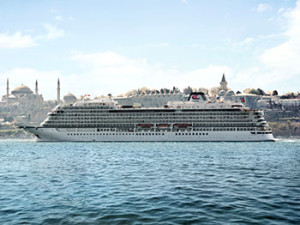
The new Viking Star, the line’s first ocean ship, cruises in Istanbul. Photo from Viking Cruises.
How many days in advance should you book a cruise to get the best price?
In part that depends on your destination, according to the website Cruisewatch.com, which uses artificial intelligence to study trends in worldwide cruising. In this case, says a Cruisewatch press release, they undertook a “massive study [that] examined 18,983 sailings by region with departures in 2017.”
They also conducted an “intensive analysis of over 18 million data points” (which are, of course, too numerous to detail in a press release or just about anywhere for that matter, but we are nonetheless grateful for modern technology).
Cruisewatch says the massive study found a “surprising trend: as the date of departure approaches, cruise prices fluctuate to a greater extent.” Some regions, they note, show as much as a 71… Continue reading
 This is the fifth and final post in guest contributor Myles Stone’s reflections on his recent two-month stay with his family in Hoi An, Viet Nam, more than 40 years after the end of the war that roiled America and in many ways changed baby boomers’ lives and world views forever.
This is the fifth and final post in guest contributor Myles Stone’s reflections on his recent two-month stay with his family in Hoi An, Viet Nam, more than 40 years after the end of the war that roiled America and in many ways changed baby boomers’ lives and world views forever.
But now it’s a new era in this beautiful Southeast Asian country, where the vast majority of the population was born after what they call the American War. (Even when I visited Viet Nam in 1997, there was little anti-American resentment.
Myles offered eloquent observations about the history of the war in his previous post during a visit to the ancient imperial capital of Hue, but now it’s time to move on to one of Viet Nam’s greatest contributions to world culture: its cuisine, which happens to be my own regional favorite.
As usual, this post is illustrated by… Continue reading
Here’s part 4 of Myles Stone’s Viet Nam Diary.– a day exploring the former imperial capital of Hue, which combines both ancient and modern history, including stark reminders of the Viet Nam War.
For those who missed Myles’ previous three posts, he’s a Tucson physician who recently spent two months in Hoi An, Viet Nam, with his wife, Aimee, and baby daughter, Mimi. They were joined for part of their stay by my son, Grael, his wife, Nona, and baby son, Conrad.
How did two toddlers do in Viet Nam? Just fine.
Here’s Part 3 of guest contributor Myles Stone’s Viet Nam Diary, featuring his insightful narratives during a recent two-month stay with his family in Hoi An, Viet Nam, during which he received a visit from my son, Grael; daughter-in-law, Nona; and my 16-month-old (and already well-traveled) grandson, Conrad. (Myles’ wife, Aimee, and baby daughter, Mimi, rounded out the contingent of travelers.)
All were born after the Viet Nam War ended in 1975, and thus bring a fresh perspective to the country that so consumed the baby boom generation in the U.S. during the turbulent 1960’s and early 1970’s.
In this post and the next, Myles recounts a visit to Viet Nam’s old imperial capital of Hue during the late April holiday marking the reunification of the country. As with all his posts, photos are courtesy of the family photographer, wife Aimee.
By Myles Stone
Photos by… Continue reading
An Bang Beach, Hoi An, Viet Nam
This is the second in our series of guest posts from Myles Stone, a Tucson physician who recently spent two months in Hoi An, Viet Nam, with his wife, Aimee, and baby daughter, Mimi.
Our son, Grael, daughter in law, Nona, and our then-16-month-old grandson, Conrad, spent two weeks visiting the Stones there this spring.
These are slice-of-life pieces that provide insights into what Viet Nam — a country that played such a huge role in the baby boomer experience of the 1960s — is like today.
You can read about the usefulness of their local neighborhood “fixer” in Myles’ first post.
In this post, Myles treats us to a visit to one of the many tailoring shops in Hoi An, where you can get custom-made suits, shirts, and other items of clothing made from scratch for a tiny fraction of what… Continue reading

Today I’m delighted to introduce guest poster Myles Stone, a physician and friend of my son, Grael, and daughter-in-law, Nona.
Grael, Nona, and young Conrad P. Norton, who was 16 months old at the time (all pictured above arriving in Viet Nam), recently spent two weeks visiting Myles, his wife Aimee, and their baby daughter, Mimi, during their stay this spring in Hoi An, Viet Nam.
Though their experiences were those of a younger generation — none were alive during the Viet Nam War that so consumed the formative years of most baby boomers — Myles’ observations on their two months in Hoi An offer insightful and amusing glimpses of what life is like there today more than 40 years after the end of the war. (His complete blog can be found here.)
In this installment, one of a multi-part series, Myles describes the key role that the… Continue reading













